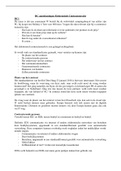Summary
Summary Paris Anthology - A Level English Literature and Language
- Module
- Paris Anthology
- Institution
- AQA
Complete Paris Anthology Revision Guide created by an A grade student. This guide includes structure, genre, terminology and summaries.
[Show more]




